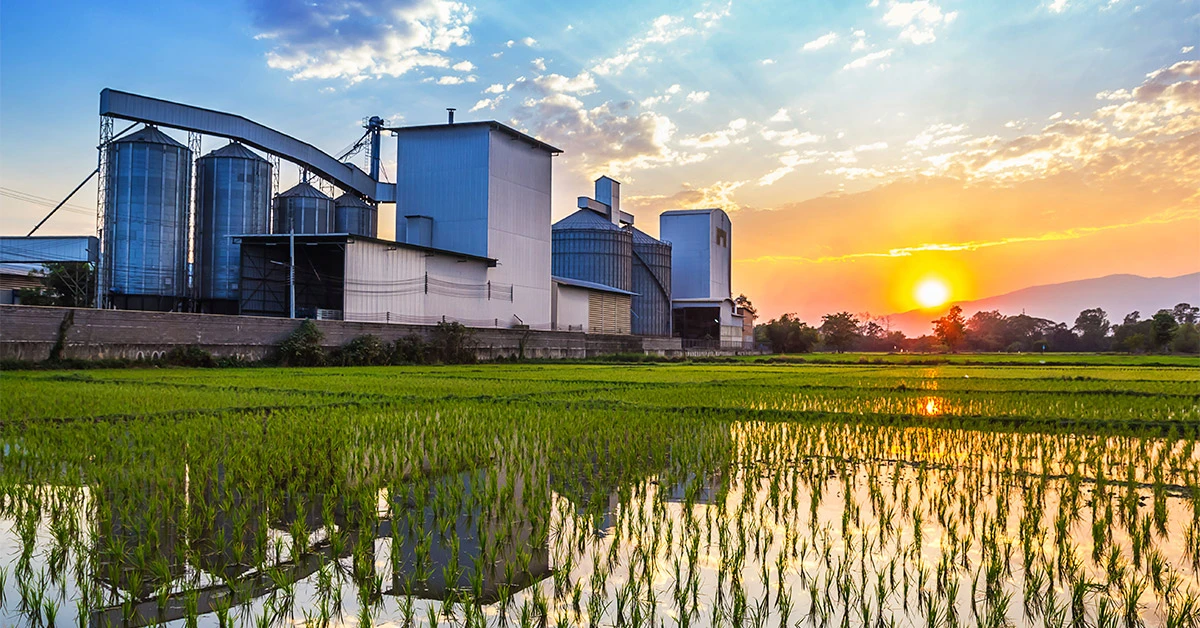Planning for Prevention
The 1991 U.S. Clean Air Act and the Montreal Protocol, an international treaty, were enacted to halt thinning of the earth’s ozone layer. They required that methyl bromide, a common but environmentally destructive pesticide, be phased out of use by 2005. Fumigation with the pesticide has been an important addition to sanitation protocols to aid in preventing pest infestations of rice during post-harvest processing and storage. Since no feasible alternative yet exists for methyl bromide, some industries were allowed a temporary “critical use exemption” to prevent disruption to commercial markets. However, for rice and other grain commodities, methyl bromide was completely eliminated in 2014. A-State researcher Tanja McKay is working to develop effective and economically feasible alternative strategies for integrated pest management (IPM) for rice mills and producers.
McKay, professor of entomology and director of the graduate environmental sciences program, began her current research by monitoring presence of the lesser grain borer in rice mills. Her team placed and monitored 99 pest traps around the perimeter of a rice mill for three years to learn patterns of activity, flight status and seasonality of insects associated with stored rice. The project yielded valuable knowledge and she and her collaborators from Louisiana State University, Oklahoma State University, Texas A&M University and the USDA Agricultural Research Service presented workshops for rice mills and producers across the nation to help protect this critical commodity. Their work was the first ever to focus on alternative methods of preventing pest infestations in post-harvest rice, despite that the U.S. is the fourth-largest rice exporting country, accounting for 12 percent of global rice exports.
McKay and her team next shifted their focus to the red flour beetle, the primary driver for continued use of methyl bromide fumigation. They expanded pest monitoring to include both the inside and outside perimeter of rice mills and examined beetle development at various stages of processing. “As the rice grain goes through the milling process, each machine does a different function at a different temperature and produces a different byproduct,” explains McKay. “Our research will determine the potential for the red flour beetle to impact these byproducts at each stage of processing. This has never been done before.”
The research team includes undergraduate and graduate students funded by the U.S. Department of Agriculture. Working in walk-in incubators, they tested beetle growth under conditions that correlate with the milling process. They also examined the use of cyfluthrin, an insecticide used for spot treatments. Beetle mortality was tested on petri dishes containing cyfluthrin and a layer of cement that depicts the floor of a rice mill. The dishes were then placed in the rice mills to determine how long the insecticide remains effective. Rice mill workers were asked to “clean” the cement petri dishes using the same process they use to clean the mill floor. “It really comes down to cleanliness and sanitation,” says McKay. “In our current studies we are asking, how does sanitation play a role in the movement of insects in a milling situation and how we can use sanitation plans to prevent pest infestations.” Once vulnerable areas for management of the red flour beetle have been identified, infestations can be prevented or managed using a combination of sanitation and targeted insecticide treatments.
"Our most important outcome is to let the rice industry know about this work and that we are here to help them develop individualized pest management plans."
Economic analysis of alternative IPM strategies is a key component of the team’s research. Rice mills check incoming rice for quality and mill a small sample to determine the price for each load of grain. If there is an insect in the sample, the mill will reject the entire load. There also may be loss of product during milling. “Over ten percent of grains are destroyed in post-harvest processing. The economics of the global rice industry are very vulnerable to the impact of pest infestations.” There are a variety of alternative insect management strategies including heat treatment, fumigation with other insecticides, and sanitation that can be implemented. McKay’s team is evaluating the differences in economic risks associated with these alternative strategies.
McKay says the most important aspect of her work is to let the rice industry know who they are and that they are here to help them tailor an IPM plan. “We are conducting workshops in Arkansas, California, Louisiana and Texas for mills and producers. We examine each production system and are assessing whether the research is making any changes in the industry. We are available to help develop individualized integrated pest management, sanitation and response plans for each mill.”

